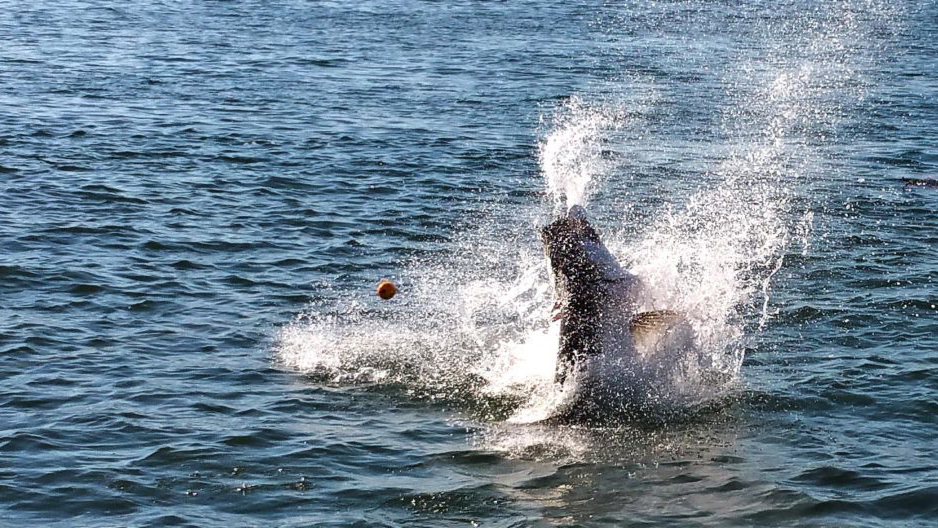Last Updated on May 6, 2022 by Staff Writer
For many passionate Tampa Bay area saltwater anglers there are few things more exciting than the start of the tarpon migration. Each year from late April to early May large adult tarpon, often exceeding 150lb, begin to show up on the nearby beaches, passes, channels, and flats as they follow instinctual paths up the coast and out to deep water in the Gulf of Mexico to spawn.
For some, the crowning achievement of their fishing careers is landing their first big tarpon. These powerful and acrobatic fish are notoriously difficult to land, but with persistence, research, and sometimes professional help, anglers can develop the skills to land the fish of a lifetime. Captain Jason Dozier has years of experience fishing the gulf coast of Florida and has helped many clients land their first and most memorable tarpon.
The best tip for hooking tarpon is understanding what creatures they are feeding on and using that as bait. During times when mullet are thick in the area, particularly during the fall and spring mullet run, tarpon will be keyed in on eating them.
Other times, when small crabs are commonly observed floating in the current in passes, they will be the best bait.
Rig live mullet through the nose and crabs through the back corner of the shells and either free line them, or suspend them under corks, in passes during strong outgoing or incoming tides.

If the tarpon are around but not feeding on your live bait, switch it up, try fresh chunks of bait on the bottom around the edges of the passes or on the flats where you see fish. This could include mullet heads, ladyfish chunks, pinfish tails, and even shrimp.
Another tip is to sharpen your hooks, even if they are brand new, make sure that they are so sharp they gently stick on your fingernail when touched to the surface. If not, file them to a pin-sharp point.
Time of day is also a major factor in catching tarpon. Low light conditions seem to provide the best action. This is likely because tarpon have great vision, and getting them to eat a hook and line can be easiest when they can’t see it as well. So make sure to begin your day’s predawn or fish past sunset into the dark.
For lure fishing, use big paddle tails (5 to 8 inches) worked near the top of the water column, particularly when mullet are around. Additionally, large topwater walk-the-dog style lures, like the Super Spook, can be a fantastically fun way to stimulate an aggressive strike and hook up.
When you want to learn Tampa Bay area tarpon techniques from a professional guide, make sure to contact Captain Jason Dozier, owner of FishNFL. The season has begun, so schedule your charter now!


